Themed collection Charge Transporting Nanostructured Polymers for Electrochemical Systems

Charge transporting nanostructured polymers for electrochemical systems – a themed collection
Guest editors Shrayesh N. Patel and Nitash P. Balsara introduce this themed collection on charge transporting nanostructured polymers for electrochemical systems.

Mol. Syst. Des. Eng., 2019,4, 221-222
https://doi.org/10.1039/C9ME90008J
Morphology control in semicrystalline solid polymer electrolytes for lithium batteries
The significance of morphological control on the ion transport properties of semicrystalline solid polymer electrolytes is illustrated.

Mol. Syst. Des. Eng., 2019,4, 793-803
https://doi.org/10.1039/C9ME00028C
Decoupling segmental relaxation and ionic conductivity for lithium-ion polymer electrolytes
This perspective reviews current strategies to decouple segmental motion and ionic conductivity for lithium polymer battery electrolytes, including an outlook for potential future improvements.

Mol. Syst. Des. Eng., 2019,4, 779-792
https://doi.org/10.1039/C9ME00038K
Ion transport in hydroxide conducting block copolymers
An overview of hydroxide ion transport (a property proportional to fuel cell performance) in block copolymers is presented.
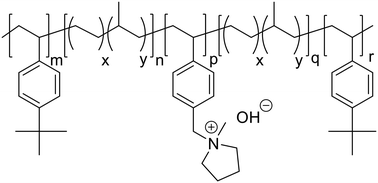
Mol. Syst. Des. Eng., 2019,4, 519-530
https://doi.org/10.1039/C9ME00022D
Ion transport in polymeric ionic liquids: recent developments and open questions
Recent developments and outstanding questions in the context of charge transport mechanisms in polymeric ionic liquids are highlighted.

Mol. Syst. Des. Eng., 2019,4, 280-293
https://doi.org/10.1039/C8ME00114F
Multivalent ion conduction in solid polymer systems
The multifunctional interactions of multivalent cations with polymers creates challenges for enhancing cation conductivity, which may be solved through new synthetic and computational efforts.
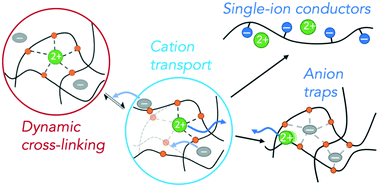
Mol. Syst. Des. Eng., 2019,4, 263-279
https://doi.org/10.1039/C8ME00096D
Charging toward improved lithium-ion polymer electrolytes: exploiting synergistic experimental and computational approaches to facilitate materials design
Lithium-ion battery performance is governed by ionic transport mechanisms over a wide range of size scales.
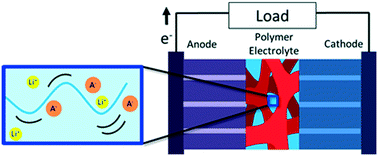
Mol. Syst. Des. Eng., 2019,4, 223-238
https://doi.org/10.1039/C8ME00105G
Confinement-entitled morphology and ion transport in ion-containing polymers
Designs of future polymer electrolytes are linked to confinements through end-group chemistry, precise sequencing of ions, single-ion transport, and crystalline ion channels.
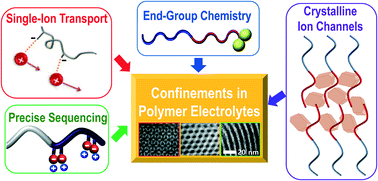
Mol. Syst. Des. Eng., 2019,4, 239-251
https://doi.org/10.1039/C8ME00117K
Nanoscale layers in polymers to promote ion transport
Precisely periodic functional groups induce controlled hairpin folding in some polymers, forming ordered sub-nanometer layers that promote ion transport.
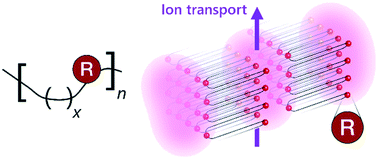
Mol. Syst. Des. Eng., 2019,4, 252-262
https://doi.org/10.1039/C8ME00086G
Polymeric ionic liquids for lithium-based rechargeable batteries
Polymeric ionic liquids containing both ionic liquid-like moieties and polymer frameworks are promising alternative electrolytes/binders for Li-based rechargeable batteries.
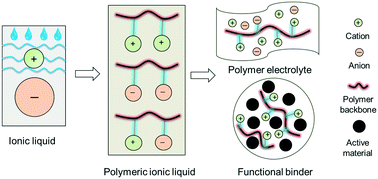
Mol. Syst. Des. Eng., 2019,4, 294-309
https://doi.org/10.1039/C8ME00103K
Managing transport properties in composite electrodes/electrolytes for all-solid-state lithium-based batteries
In the global competition for ultimate electrochemical energy storage systems, proper tailoring of the ionic/electronic conductive pathways connecting solid electrolyte and active material particles in the electrodes is essential for achieving full capacity output of Li-based secondary batteries.
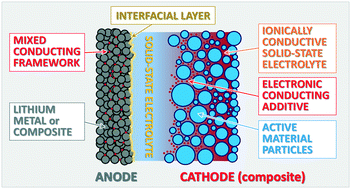
Mol. Syst. Des. Eng., 2019,4, 850-871
https://doi.org/10.1039/C9ME00050J
Morphological effects on polymeric mixed ionic/electronic conductors
A review highlighting the implications of morphology on the mixed conduction performance of polymers.
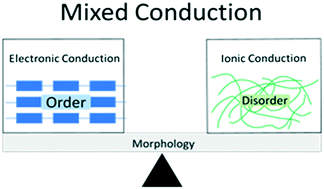
Mol. Syst. Des. Eng., 2019,4, 310-324
https://doi.org/10.1039/C8ME00093J
The Soret effect in dry polymer electrolyte
The Soret effect results in a concentration gradient when a mixture is exposed to a temperature gradient.

Mol. Syst. Des. Eng., 2020,5, 856-863
https://doi.org/10.1039/C9ME00145J
Dual sulfonated poly(arylene ether ketone) membrane grafted with 15-crown-5-ether for enhanced proton conductivity and anti-oxidation stability
In the proton exchange membrane fuel cell, durability has recently been the critical issue in its operation.
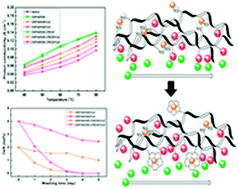
Mol. Syst. Des. Eng., 2019,4, 901-911
https://doi.org/10.1039/C9ME00009G
Nanothin film conductivity measurements reveal interfacial influence on ion transport in polymer electrolytes
Nanoscale interfacial zone limits ion transport properties of polymer electrolytes.

Mol. Syst. Des. Eng., 2019,4, 597-608
https://doi.org/10.1039/C9ME00011A
Study of segmental dynamics and ion transport in polymer–ceramic composite electrolytes by quasi-elastic neutron scattering
This work elucidates the effects of Li+ conducting ceramic on the segmental dynamics and ionic conductivity of polymer electrolyte using quasi-elastic neutron scattering.
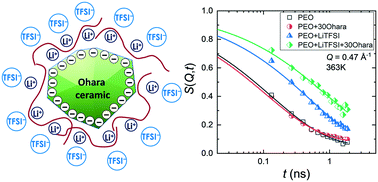
Mol. Syst. Des. Eng., 2019,4, 379-385
https://doi.org/10.1039/C8ME00113H
Ion diffusion across a disorder-to-order phase transition in a poly(ethylene oxide)-b-poly(silsesquioxane) block copolymer electrolyte
Nanostructured block copolymer electrolytes composed of organic and inorganic moieties have the potential to enable solid-state batteries.
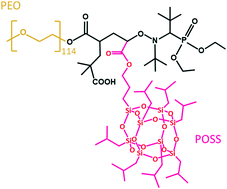
Mol. Syst. Des. Eng., 2019,4, 357-364
https://doi.org/10.1039/C8ME00077H
Ionic conductivity and counterion condensation in nanoconfined polycation and polyanion brushes prepared from block copolymer templates
Counterion condensation sensed in nano-confined and non-confined polymer electrolyte brushes with 2D force mapping AFM.
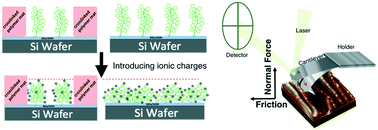
Mol. Syst. Des. Eng., 2019,4, 365-378
https://doi.org/10.1039/C8ME00081F
Self assembled, sulfonated pentablock copolymer cation exchange coatings for membrane capacitive deionization
A partially sulfonated pentablock copolymer is implemented as an ion-exchange coating for membrane capacitive deionization revealing trade-offs in water uptake, salt permeability, morphology, and performance.
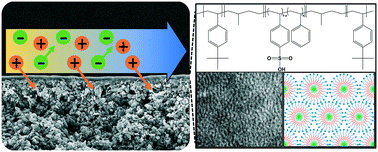
Mol. Syst. Des. Eng., 2019,4, 348-356
https://doi.org/10.1039/C8ME00115D
Ion specific, odd–even glass transition temperatures and conductivities in precise network polymerized ionic liquids
Network architectures reveal odd–even effects in existing PIL systems.
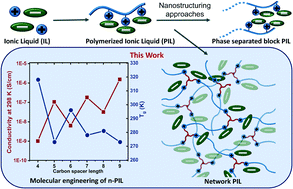
Mol. Syst. Des. Eng., 2019,4, 332-341
https://doi.org/10.1039/C8ME00087E
Switching of ionic conductivities in columnar liquid-crystalline anilinium salts: effects of alkyl chains, ammonium cations and counter anions on thermal properties and switching temperatures
Effects of molecular structures on the thermal switching behavior of ion conductivities for columnar anilinium liquid crystals have been examined.
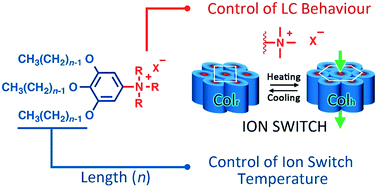
Mol. Syst. Des. Eng., 2019,4, 342-347
https://doi.org/10.1039/C8ME00099A
Impact of the position of the imine linker on the optoelectronic performance of π-conjugated organic frameworks
The linker position dramatically affects the optoelectronic performance of π-conjugated two-dimensional polymers even though the polymers have the same π-conjugated backbone.
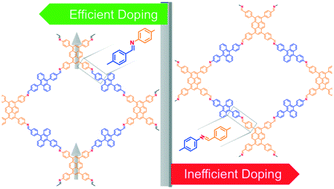
Mol. Syst. Des. Eng., 2019,4, 325-331
https://doi.org/10.1039/C8ME00079D
About this collection
From MSDE
Guest Editors: Professor Shrayesh N. Patel (University of Chicago Institute for Molecular Engineering) and Professor Nitash P. Balsara (University of California, Berkeley)
In this themed collection we showcase cutting-edge research and perspectives on designing nanostructured polymers with charge transport properties from experimental, computational, and theoretical research groups.
Such materials are critical as solid polymer electrolytes for lithium metal batteries. These mixed conducting materials can serve as binder materials to enable reversible redox reactions in electrodes. Overall, nanostructured polymeric materials are versatile materials that can be designed to achieve multi-functionality encompassing mechanical strength, charge transport (ion and/or electron) and redox-activity.